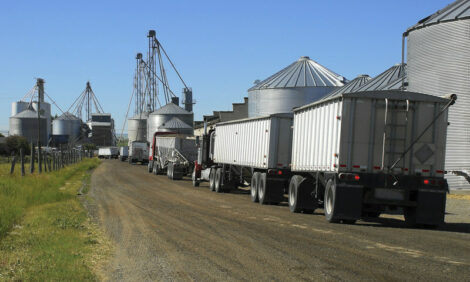



Report details economic reality of UK production
UK - An independent farm business survey of pig production in England reports a 36 per cent drop in the UK pig population and a 35 per cent decline in pig meat production since 1997.
The report, by Askham Bryan College, says that although the fall in UK pig numbers has steadied in recent years, with a slight increase in pig numbers in 2006, reduced productivity and the contraction of the national herd has had a major impact on the contribution of home-produced meat to the UK market.
Although pig prices fluctuated considerably during the late 1990s, following the typical ‘pig cycle’, the industry suffered a prolonged period of very low prices. This caused very heavy losses and a massive decline in pig numbers.
But the pig price has improved in the past three years, with price fluctuations of only a few pence on a monthly basis. The report says that the average annual price for 2004 and 2005 was 103p/kg and 105p/kg in 2006, which has brought a period of much needed stability to the sector.
However, UK pork production as a percentage of total supply has fallen dramatically - from 104 per cent between 1995/97, to just 62 per cent in 2006. Imports have increased almost three-fold during the same period and forecasters do not see this changing.
The production of home-produced bacon and ham has also fallen, down from 51 per cent to 44 per cent during the past decade. However, statistics show that this market sector has remained relatively stable since 2001 and the level of imports has not changed.
Economic insight
The report also presents financial results collated from farms defined as specialist pig enterprises, where more than two-thirds of the business output is derived from pigs. Typically, they relate to enterprises with a financial year ending between December 2005 and April 2006.
The full sample of 60 specialist holdings recorded a gross margin of £13,5332 after the deduction of variable costs. Feed costs accounted for 79 per cent of total variable costs. Fixed costs amounted to £12,2233, resulting in a Management and Investment Income (MII) of £13,099. Net Farm Income (NFI) was £29,043.
However, 50 per cent of the farms surveyed showed a negative Management and Investment Income (MII) with one-quarter showing a negative NFI figure.
The report also includes data on net margins derived from the FBS. The average figure was £15,804, but analysts say this masks a huge variation in performance. Around 43 per cent of farms showed a negative net margin. The highest margins were recorded from herds selling weaners, where, on per £100 output basis, the net margin was four times higher than those selling finishers.
During the period covered by this report feed prices were comparatively low and stable, unlike the current market situation. The considerable rise in cereal prices during the past year has not been fully compensated in terms of a rise in pig prices and the industry now faces extreme economic difficulties.
Although pig prices fluctuated considerably during the late 1990s, following the typical ‘pig cycle’, the industry suffered a prolonged period of very low prices. This caused very heavy losses and a massive decline in pig numbers.
But the pig price has improved in the past three years, with price fluctuations of only a few pence on a monthly basis. The report says that the average annual price for 2004 and 2005 was 103p/kg and 105p/kg in 2006, which has brought a period of much needed stability to the sector.
However, UK pork production as a percentage of total supply has fallen dramatically - from 104 per cent between 1995/97, to just 62 per cent in 2006. Imports have increased almost three-fold during the same period and forecasters do not see this changing.
The production of home-produced bacon and ham has also fallen, down from 51 per cent to 44 per cent during the past decade. However, statistics show that this market sector has remained relatively stable since 2001 and the level of imports has not changed.
Economic insight
The report also presents financial results collated from farms defined as specialist pig enterprises, where more than two-thirds of the business output is derived from pigs. Typically, they relate to enterprises with a financial year ending between December 2005 and April 2006.
The full sample of 60 specialist holdings recorded a gross margin of £13,5332 after the deduction of variable costs. Feed costs accounted for 79 per cent of total variable costs. Fixed costs amounted to £12,2233, resulting in a Management and Investment Income (MII) of £13,099. Net Farm Income (NFI) was £29,043.
However, 50 per cent of the farms surveyed showed a negative Management and Investment Income (MII) with one-quarter showing a negative NFI figure.
The report also includes data on net margins derived from the FBS. The average figure was £15,804, but analysts say this masks a huge variation in performance. Around 43 per cent of farms showed a negative net margin. The highest margins were recorded from herds selling weaners, where, on per £100 output basis, the net margin was four times higher than those selling finishers.
During the period covered by this report feed prices were comparatively low and stable, unlike the current market situation. The considerable rise in cereal prices during the past year has not been fully compensated in terms of a rise in pig prices and the industry now faces extreme economic difficulties.








